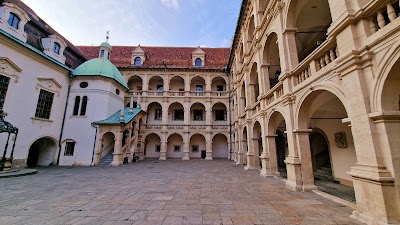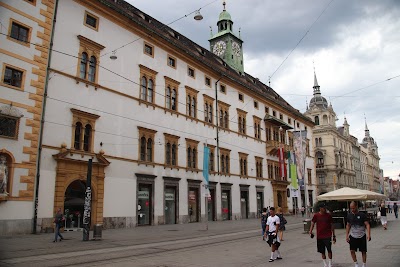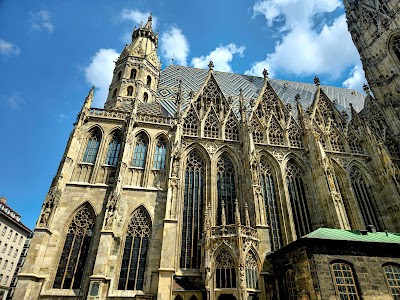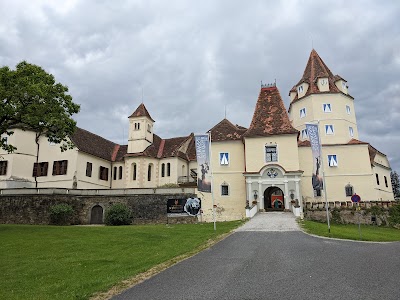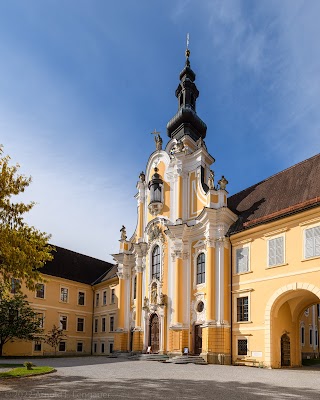Landhaus Graz (Landhaus Graz)
Overview
Landhaus Graz: A Renaissance Masterpiece
Landhaus Graz is one of Austria's most stunning Renaissance buildings, nestled in the vibrant heart of Graz, the capital of Styria. This architectural gem not only embodies the grandeur of the Renaissance era but also serves as a significant symbol of the region's rich cultural and political history.
Constructed between 1527 and 1531 by the talented Italian architect Domenico dell’Allio, the Landhaus was originally designed to house the provincial parliament of Styria, a role it continues to fulfill today. Its elegant façade and intricately designed courtyards showcase the influence of Italian Renaissance architecture, making it a distinctive landmark in Graz's cityscape.
The Enchanting Arcaded Courtyard
The most captivating feature of the Landhaus is its arcaded Renaissance courtyard, often hailed as the most beautiful courtyard in Graz. With its three-story arcades and a central fountain, this serene setting has been a backdrop for various events and celebrations throughout the centuries. Visitors often find themselves enchanted by the harmonious blend of architectural elegance and tranquility that the courtyard offers.
Inside the Landhaus, the Hall of Knights (Rittersaal) awaits exploration. This grand hall is celebrated for its wooden coffered ceiling and exquisite decorations, exuding a sense of historical significance. Once the venue for important meetings and gatherings, it still hosts events, concerts, and exhibitions today.
A Hub of Historical Significance
A lesser-known yet fascinating aspect of the Landhaus is its pivotal role during the Protestant Reformation in the 16th century. It served as a central hub for Protestant activities and meetings, but following the Counter-Reformation, Catholicism regained its dominance, and the building continued to play an essential role as a political and administrative center.
The Landhaus also holds a prominent place in Austrian cultural heritage. Beyond its historical and political significance, it contributes to the vibrant living culture of Graz. Throughout the year, the courtyard transforms into a lively venue for various cultural events, including the traditional Advent market and classical concerts, providing both locals and visitors with a rich cultural experience.
Architectural Insights
For those intrigued by architectural history, the Landhaus offers a fascinating glimpse into the transition from Gothic to Renaissance styles that shaped much of Europe's architectural evolution during the 16th century. The blend of functionality and aesthetics in its design highlights the ingenuity of Renaissance architects and their lasting influence on modern European architecture.
Visiting the Landhaus feels like stepping back in time. As you stroll through its arcades and hallways, you can almost hear the echoes of historical debates and envision the grandeur of past official ceremonies. It's a place where history is not merely preserved but actively experienced by each visitor.
Conveniently Located
Conveniently situated within walking distance of other major attractions in Graz, such as the Graz Cathedral, the Mausoleum of Emperor Ferdinand II, and the bustling Hauptplatz, the Landhaus serves as an ideal starting point or key stop on any tour of the city. Whether you're a history enthusiast, an architecture lover, or a casual traveler, the Landhaus offers a multifaceted experience that enriches your visit to this charming Austrian city.
Conclusion: A Must-See Landmark
In summary, the Landhaus Graz is more than just a building; it is a historical treasure trove, a cultural beacon, and an architectural gem. Standing proudly as a symbol of Styria's past and present, it invites visitors to explore and appreciate the depth of its heritage. Be sure to include the Landhaus on your itinerary when visiting Graz, and take the time to immerse yourself in the history, beauty, and serene atmosphere of this remarkable landmark.


